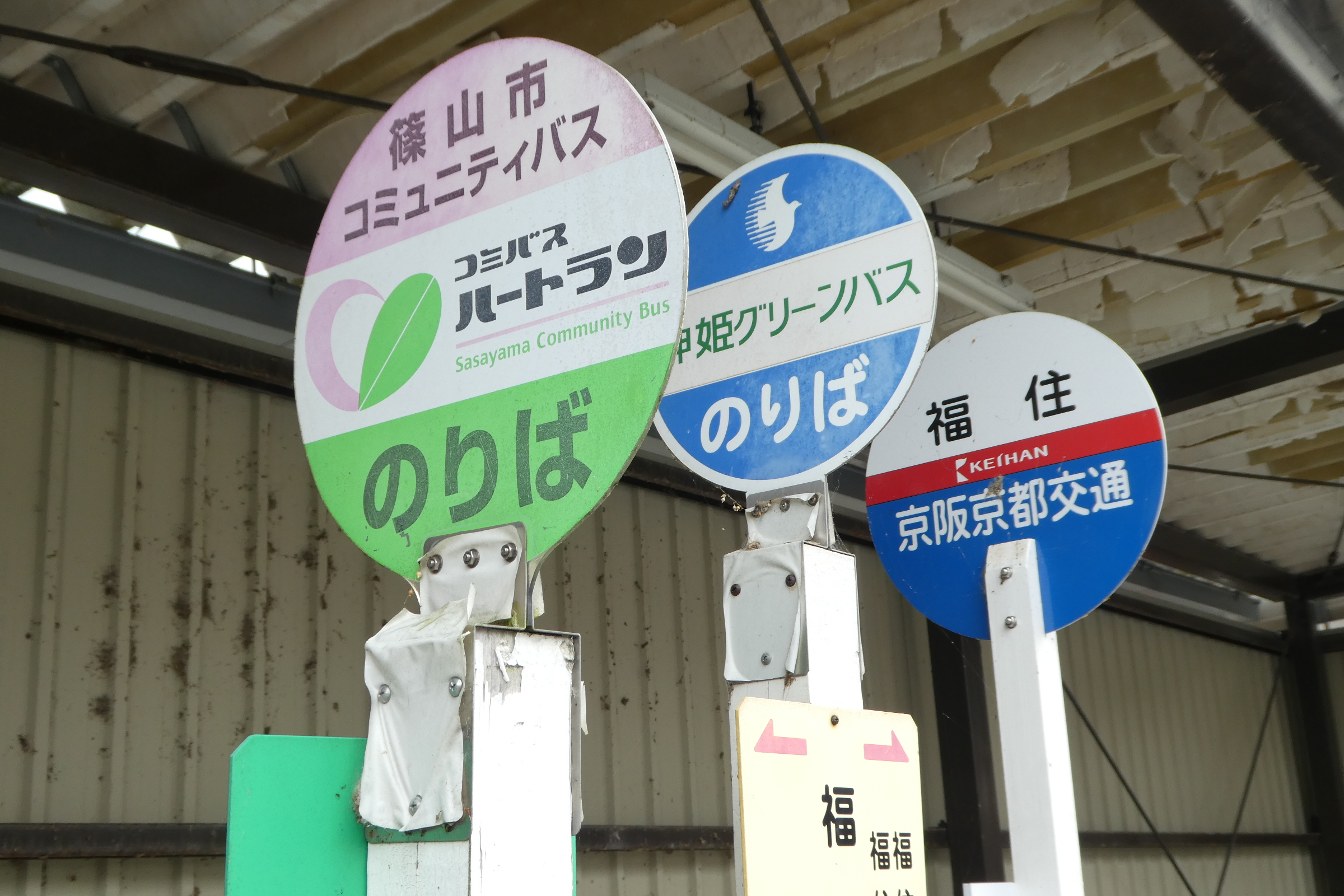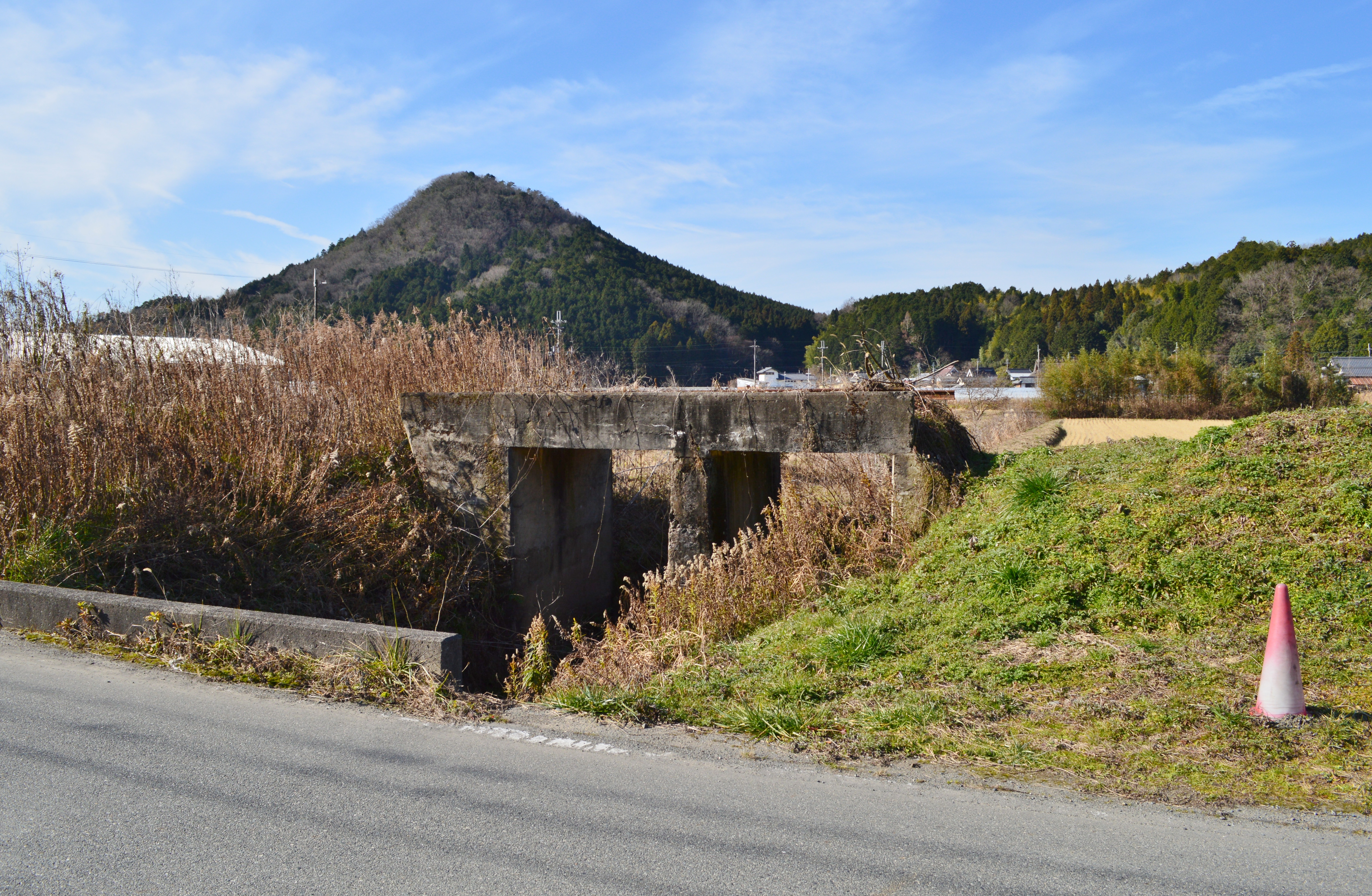|
Fukusumi Station
was a train station on the Sasayama Line in Fukusumi, Taki, Taki District, Hyogo, Japan. It closed in 1972. It is also a bus stop of Keihan Kyoto Kotsu and Shinki Green Bus. Line * Japan National Railway ** Sasayama Line Layout The station featured was one platform with one track. Adjacent stations Bus routes Enjo Line has run since 1934. It altered Sasayama Line, which did not extend to Sonobe Station. It had been operated by JNR Bus and West JR Bus until 2002. This bus route was transferred to Shinki Bus and after that transferred to Keihan Bus The is a bus company within the Keihan Group which was established on 22 July 1922 as Momoyama Motor Co.,Ltd.(''桃山自動車株式会社'') of the Keihan Electric Railway bus department. And, service areas are which are run by Keihan Electri .... References External links Railway stations in Japan opened in 1944 Railway stations closed in 1972 Railway stations in Hyōgo Prefecture Railway stations in Japan clo ... [...More Info...] [...Related Items...] OR: [Wikipedia] [Google] [Baidu] |
Japan National Railway
The abbreviated JNR or , was the business entity that operated Japan's national railway network from 1949 to 1987. Network Railways As of June 1, 1949, the date of establishment of JNR, it operated of narrow gauge () railways in all 46 prefectures of Japan. This figure expanded to in 1981 (excluding Shinkansen), but later reduced to as of March 31, 1987, the last day of JNR. JNR operated both passenger and freight services. Shinkansen Shinkansen, the world's first high-speed railway was debuted by JNR in 1964. By the end of JNR in 1987, four lines were constructed: ; Tōkaidō Shinkansen: , completed in 1964 ; Sanyō Shinkansen: , completed in 1975 ; Tōhoku Shinkansen: , as of 1987 ; Jōetsu Shinkansen: , completed in 1982 Buses JNR operated bus lines as feeders, supplements or substitutions of railways. Unlike railway operation, JNR Bus was not superior to other local bus operators. The JR Bus companies are the successors of the bus operation of JNR. Ships JNR op ... [...More Info...] [...Related Items...] OR: [Wikipedia] [Google] [Baidu] |
Sasayama Line
was a railway line operated by Japanese National Railways that connected Sasayamaguchi Station with Fukusumi Station in present-day Tamba-Sasayama, Hyōgo, Japan. The line was discontinued on 1 March 1972.種村直樹『ローカル線の旅』(1981年12月15日 日本交通公社出版事業部 発行) Data The single-track 1,067-mm gauge railway was operated between Sasayamaguchi and Fukusumi (17.6 km) with six stations including both termini. The line was not electrified. History During World War II, the railway line was constructed for transport of manganese and quartz sand, as a part of plan to connect Sasayamaguchi Station with Sonobe Station as bypass of Sanyo Main Line. In 1944, the line was open to traffic in the section between Sasayamaguchi Station and Fukusumi Station. At the same time, the Sasayama Railway which opened in 1913 was discontinued. In 1945, the end of the war led to the discontinuation of the construction of the remainder of the planned li ... [...More Info...] [...Related Items...] OR: [Wikipedia] [Google] [Baidu] |
Train Station
A train station, railway station, railroad station or depot is a railway facility where trains stop to load or unload passengers, freight or both. It generally consists of at least one platform, one track and a station building providing such ancillary services as ticket sales, waiting rooms and baggage/freight service. If a station is on a single-track line, it often has a passing loop to facilitate traffic movements. Places at which passengers only occasionally board or leave a train, sometimes consisting of a short platform and a waiting shed but sometimes indicated by no more than a sign, are variously referred to as "stops", "flag stops", " halts", or "provisional stopping places". The stations themselves may be at ground level, underground or elevated. Connections may be available to intersecting rail lines or other transport modes such as buses, trams or other rapid transit systems. Terminology In British English, traditional terminology favours ''railway station' ... [...More Info...] [...Related Items...] OR: [Wikipedia] [Google] [Baidu] |
Japan
Japan ( ja, 日本, or , and formally , ''Nihonkoku'') is an island country in East Asia. It is situated in the northwest Pacific Ocean, and is bordered on the west by the Sea of Japan, while extending from the Sea of Okhotsk in the north toward the East China Sea, Philippine Sea, and Taiwan in the south. Japan is a part of the Ring of Fire, and spans Japanese archipelago, an archipelago of List of islands of Japan, 6852 islands covering ; the five main islands are Hokkaido, Honshu (the "mainland"), Shikoku, Kyushu, and Okinawa Island, Okinawa. Tokyo is the Capital of Japan, nation's capital and largest city, followed by Yokohama, Osaka, Nagoya, Sapporo, Fukuoka, Kobe, and Kyoto. Japan is the List of countries and dependencies by population, eleventh most populous country in the world, as well as one of the List of countries and dependencies by population density, most densely populated and Urbanization by country, urbanized. About three-fourths of Geography of Japan, the c ... [...More Info...] [...Related Items...] OR: [Wikipedia] [Google] [Baidu] |
Keihan Bus
The is a bus company within the Keihan Group which was established on 22 July 1922 as Momoyama Motor Co.,Ltd.(''桃山自動車株式会社'') of the Keihan Electric Railway bus department. And, service areas are which are run by Keihan Electric Railway in Osaka, South of Kyoto, Ōtsu. Outline On 1 April 2006, Keihan-Uji Kotsu and Keihan Uji Kotsu Tanabe were merged to Keihan Bus. History This bus company was originally taxi company which was named as Momoyama Motor Co.,Ltd. and funded on 20 July 1922. And, the company chiefly took passengers who visit the ''Fushimi Momoyama no Misasagi''. After that, the company worked in close cooperation with Keihan Electric Railway and the company became subsidiary to the Keihan in 1924. And also merged Daigo Kisen which ran water transportation company in Lake Biwa to Keihan Bus in 1930. On one hand, Jōhoku Motor Co.,Ltd. which established in Osaka in 1924 expanded service area to Hirakata area, what was worse, the company wo ... [...More Info...] [...Related Items...] OR: [Wikipedia] [Google] [Baidu] |
Shinki Bus
Shinki Bus Co., Ltd is a transport company based in Himeji, Japan, operating local bus services in Hyogo prefecture and other services mainly related to transport and tourism. History The company was founded on 10 March 1927 under the name of Shinki Automobile ( 神 姫 自動 車 株式会社, Shinki Jidôsha Kabushikigaisha ) in Kobe . In 1947 the company moved and settled in Himeji 260px, Himeji City Hall is a city located in Hyōgo Prefecture in the Kansai region of Japan. , the city had an estimated population of 525,682 in 227,099 households and a population density of 980 persons per km². The total area of the city is ..., renamed as Shinki Co Automotive( 神姫合同自動車株式会社, Shinki Gōdō Jidosha Kabushikigaisha ) . In 1956, the company changed its name back to its original name. In May 1972, the company again modifies its name to become Shinki Bus, the current name. Vehicles Currently, four models of Mitsubishi Fuso, Isuzu, Hino, Nissan Diesel (then "U ... [...More Info...] [...Related Items...] OR: [Wikipedia] [Google] [Baidu] |
Railway Platform
A railway platform is an area alongside a railway track providing convenient access to trains. Almost all stations have some form of platform, with larger stations having multiple platforms. The world's longest station platform is at Hubbali Junction in India at .Gorakhpur gets world's largest railway platform ''The Times of India'' The in the United States, at the other extreme, has a platform which is only long enough for a single bench. Among some United States train conductors the word "platform" has entered [...More Info...] [...Related Items...] OR: [Wikipedia] [Google] [Baidu] |
Sonobe Station
260px, Sonobe Station platforms, October 2010 is a passenger railway station located in then city of Nantan, Kyoto Prefecture, Japan, operated by West Japan Railway Company (JR West). It is a stop of limited express trains - " Kinosaki", "Hashidate" and "Maizuru". Lines Sonobe Station is served by the San'in Main Line (Sagano Line between this station and Kyoto Station), and is located 34.2 kilometers from the terminus of the line at . Station layout The station consists of two ground-level island platforms connected by an elevated station building. The station has a ''Midori no Madoguchi'' staffed ticket office. Platforms Adjacent stations Bus routes History Sonobe Station opened on August 15, 1899. With the privatization of the Japan National Railways (JNR) on April 1, 1987, the station came under the aegis of the West Japan Railway Company. The current station building was completed in 1991. Passenger statistics In fiscal 2018, the station was used by an aver ... [...More Info...] [...Related Items...] OR: [Wikipedia] [Google] [Baidu] |
Yakami Castle
was a Sengoku period Japanese castle located in what is now part of the city of Tamba-Sasayama Hyōgo Prefecture, Japan. Its ruins have been protected as a National Historic Site since 2005.The castle was one of the largest in Tanba Province, along with Kuroi Castle and Yagi Castle. It was the original base of power for the Hatano clan. History Yagami Castle is located on 400-meter Most Tashiroyama to the southeast of the modern city center of Tamba-Sasayama in former Tanba Province. Tanba is very mountainous, but due to its proximity to the capital at Kyoto, it was regarded as having high strategic values. Settlement was mostly in four mountain basis, Hikami and Sasayama in what is now Hyōgo and Fukuchiyama and Kameoka in what is now Kyoto Prefecture. During the Muromachi period, the ''shugo'' of the province was the Hosokawa clan, who ruled through their deputy, the Naito clan. However, following the Onin War, the Hosokawa clan was greatly weakened and divided by internal ... [...More Info...] [...Related Items...] OR: [Wikipedia] [Google] [Baidu] |



.jpg)
